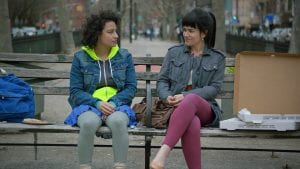For the fourth Blog Entry, I am focusing on the gender representation within the show. In New Girl, there is a balanced gender spread. Even though there are slightly more male characters than the female characters, the main character is Jess and the show plot is always related to her. Therefore, it balances out the gender representation. However, only two genders, male and female, are represented in this show whereas there are many other genders that could have been represented.
In this show, the two main couples are Jess and Nick, and Cece and Schmidt. In the relationship between Jess and Nick, Jess is dramatic, and Nick hides his feelings. However, this was contrasted in one episode where Nick accidentally says he loves Jess and Jess goes away after giving an awkward reaction. In the relationship with Cece and Schmidt, Cece makes the logical decision and Schmidt follows her decision or runs away from his responsibility. In conclusion, I believe the agency is equally assigned because the characters that makes significant decisions are both males and females.

Jess and Nick

Cece and Schmidt
There are not much of class, disability, and mental illness issues discussed in this show. Since the genre of New Girl is sitcom (situation comedy), the show is mostly in the light mood. Due to this fact, the serious issues in the society are not usually addressed. As I mentioned preciously, there are only two genders represented throughout the show. There is no diversity in sexual orientation. There are only heterosexuals. Lastly, there are characters with different races. However, the race is not really associated with gender in this show, which means that there is no noticeable correlation between gender and race.
In conclusion, although it lacks many different genders, the males and females are balanced in the show New Girl. There are characters which are gender stereotypes but there are also characters which are far opposite of these stereotypes.













